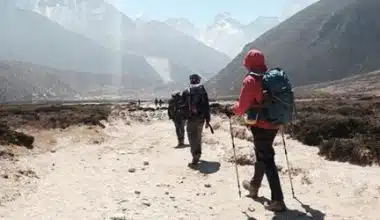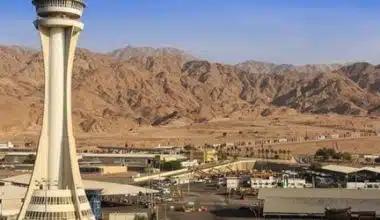Millions of visitors come to see Guatemala’s natural beauty. If you read these fun and interesting facts about Guatemala, you could just find a reason to make it your next vacation destination. We hope these Guatemala facts have piqued your curiosity about visiting this great nation!
Major Facts About Guatemala
Here is a list of the major facts about Guatemala;
#1. Guatemala has 21 different dialects.
90% of the population speaks Spanish, which is the official language. However, there are Mayan, Xinca, and Garfuna roots as well. Since the Maya (a Mesoamerican Indigenous people) initially built the Mayan civilization, the language has evolved into 21 dialects that can be heard today in a true Mayan encounter.
#2. Guatemala City is the country’s capital.
Ciudad de Guatemala is the city’s Spanish name. Despite the fact that it is officially known as Nueva Guatemala de la Asunción. This translates as ‘New Guatemala of the Assumption’. Locals refer to the city as ‘Guatemala’ or ‘Guate’. It is not only Guatemala’s capital, but it is also the country’s largest metropolis. It is also Central America’s most populous urban region.
#3. Guatemala is bordered by four countries.
Mexico and Belize border it to the north, while El Salvador and Honduras border it to the south. The Pacific Ocean is to the west of it.
#4. Guatemala’s terrain is divided into three major sections.
Its territory includes the northern plains and a dispersed population. The central volcanic highlands and the southern agricultural and Pacific plains are densely populated.
Guatemala is ranked second among the countries with the highest concentrations of ozone.
This gas could be found in both the stratosphere and the upper atmosphere of the Earth. It is also located in the troposphere, which is the lowest level of the atmosphere.
#5. Guatemala’s official language is Spanish.
The language is spoken by approximately 93% of Guatemalans. Nonetheless, the country’s linguistics are diverse. There are 21 Mayan dialects, as well as indigenous and Arawaka1n languages.
#6. There is no official religion in Guatemala.
Nonetheless, Christianity’s foundation remains an important aspect of Guatemalan society. The majority of the population is Christian. While others fall under the categories of Roman Catholic Christianity, Protestant Christianity, Agnosticism, Atheism, or Irreligion.
#7. Guatemala’s most important export is coffee.
Coffee is big in Guatemala. Like, really big. By 1880, coffee accounted for 90% of Guatemala’s exports, and it’s still one of the country’s key exports and sources of wealth today. The coffee has a distinct flavor, often full-bodied, with rich chocolate and cocoa flavors.
Fun & Interesting Guatemala Facts You Should Know
Here are top historical and interesting fun facts about Guatemala that makes the Latin American country worth exploring.
#1. Guatemalans love blue denim.
Many Maya women are skilled textile makers. Guatemala is a world leader in the production of blue denim.
Textile weaving is still practiced in areas such as San Antonio Aguas Calientes, just outside of Antigua. Guatemalans wear Huipiles, which are magnificent garments woven by local women and have a sacred connotation based on area.
#2. Guatemalans created the first chocolate bar.
We’d all agree (at least the chocolate lovers among us) that the Maya people venerate the cocoa tree. Chocolate is referred to as “the food of the Gods.” They also feel that chocolate has amazing nutritional benefits, such as lowering blood pressure. Guatemala is becoming a large producer and exporter of chocolate products.
But don’t worry, there’s still enough of good chocolate to be had while visiting the country. Many of the better spots can be found in Antigua’s stores. And while you’re there, don’t miss ChocoMuseo, a museum that will teach you about the history and nutritional benefits of chocolate. (You could go to the museum and have some coffee}.
#3. Guatemala has one of Latin America’s highest rates of violent crime.
In 2014, there were 6,000 violent deaths in the country. The average number of homicides per week in 2016 is 101.
#4. Guatemala City is the country’s industrial and commercial hub.
15% of the population found work here.
Guatemala is the largest beneficiary of remittances in Central America.
This is because Guatemala has a big émigré community in the United States.
#5. A ‘Rhode Island-sized’ jade mine was revealed by a cyclone.
Guatemala is one of the world’s largest jade producers, and the Maya people used these unique stones for ideological ceremonies. During your stay, you can purchase your own valuable stones from the jewelry stores in Antigua.
#6. Old American school buses are repurposed as ‘chicken buses’
When big yellow American school buses reach 150,000 miles or more, they are auctioned off and driven down to Guatemala, where they are resurrected by locals with strokes of paint in every color of the rainbow and used for local transportation. Riding Guatemala’s public transportation is a thrilling ride, and opting for this budget-friendly travel alternative will give you an eclectic local experience.
#7. You can assist in the releasing of turtles into the sea at Tortugario Montericco.
Who wouldn’t want to observe and help these adorable creatures take their first steps in life? At Tortugario Montericco, you can participate in conservation efforts by setting up nested protection for the eggs along the beach (a key nesting place for olive ridley turtles).
#8. Lake Atitlan in Guatemala is the deepest lake in Central America.
It’s as profound as it is lovely! Only 4 hours from Antigua, it’s an ideal location for keen photographers to capture some of the best volcano views.
San Jorge La Laguna is a little community with a view of Lake Atitlan and inhabitants willing to teach you about their traditional crafts. To truly immerse yourself in the culture, stay with a local host family.
#9. Guatemalans fly kites to remember their loved ones.
Guatemalans memorialize their dead during the All Saints Day Kite Festival. Every year on November 1st, Guatemalans participate in a rite that has been practiced for over 3000 years. People throng to cemeteries to clean and adorn their loved ones’ graves. Then, Guatemalans fly large and artistically decorated kites high in the sky — a sight to behold.
#10. Guatemala has the most ancient human history record in Central America.
Experts discovered evidence dating back to 18,000 BC. However, academics continue to disagree on this point. What is commonly known is that humans traveled through the country about 12,000 years ago on their way to South America.
#11. Guatemala is home to over 30 volcanoes.
Three of them are regarded to be active. Pacaya, Fuego, and Santiaguito are their names.
A live lava flow can be seen in Guatemala.
Tourists come to see the splendor of red-hot lava up close at Pacaya Volcano.
#12. The Motagua River is Guatemala’s longest river.
It is approximately 250 miles long. Aside from its record-breaking length, it also acts as a vital route of transportation for local products cultivated in the eastern valleys. Coffee and bananas are among the products that go up and down the rivers.
#13. Guatemala also has the highest point in Central America.
Guatemala’s Tajamulco Volcano rises 4203 meters above sea level.
Guatemala is the proud owner of three UNESCO World Heritage Sites.
Tikal National Park, Antigua Guatemala, the Archaeological Park, and the Quirigua Ruins are among them.
#14. Guatemala is home to the first combined UNESCO World Heritage Site.
Tikal National Park, located in the Petén Province in Northern Guatemala, met both the natural and cultural criteria for World Heritage status. It is located within the Maya Forest, a vast forest that stretches into Mexico and Belize.
#15. The Santa Catalina Arch is a well-known tourist attraction in Guatemala.
The nuns’ residence section is on one side of the Arch, and the school where they teach is on the other. It was built in 1694 to serve as a tunnel for the nuns who took their vow of seclusion, allowing them to avoid crossing the busy street. The city of Antigua was destroyed by an earthquake in 1773, except for the Arch, which still stands today.
#16. In Guatemala, you might participate in sea turtle conservation efforts.
Visitors to Monterrico, a volcanic beach distinguished by its black sand, can help save a sea turtle. You might assist in caring for the turtles until they are ready to return to the water at their local sea sanctuary.
#17. Baths in Guatemala are nicely situated on a volcanic vent.
Both of the extant baths are in the Guatemalan town of Quetzaltenango. These locations may provide you with the sensation of a natural bath, with steam coming from the Earth’s bowels.
The climate in the ‘Land of Eternal Spring’ is warm and tropical.
The tropical climate of Guatemala is divided into two parts: the heat and humidity of the lowlands and the coolness of the highlands.
#18. The Chichicastenango Market is Guatemala’s premier shopping destination.
This native market is where a variety of things are traded. Clothing, fabrics, textiles, local crafts, fruits, and veggies are available. Locals and visitors alike visit the location not only for its products, but also for the parties, feasts, and festivals that are conducted there.
Chichicastenango Market in Guatemala is the most active native market in the Americas.
The market, known as ‘Chichi,’ is located about 2-3 hours southwest of Guatemala City.
#19. The instant coffee technique was developed in Guatemala.
George Constant Louis Washington, an Anglo-Belgian inventor, is credited with both the creation and mass manufacture of the early instant coffee method through his company, the G. Washington Coffee Company is a coffee company in Washington, DC.
#20. The folk saint Maximón is revered by the locals.
Legend has it that the saint sneaks into town and sleeps with spouses while the men are away. Maximón was adored by Mayans from various highlands settlements in Western Guatemala.
Mashimom is a statue worshiped by the indigenous communities. He appears as a mustached young man clothed in a suit and hat. Guatemalans bring cigars and wine to the statue in order for it to bless them.
#21. Tourism is Guatemala’s second-largest industry.
Tourism employs over 35% of the country’s workforce.
#22. Guatemalan cuisine is a fusion of Mayan and Spanish influences.
Corn, beans, and chilies are prominent parts that function as main ingredients in their dishes. Pachas are typically eaten on Thursdays by the natives. It is a popular Guatemalan meal distinguished by a potato tamale.
#23. ‘Gallo’ is Guatemala’s national beer.
Guatemalans enjoy their coffee weak and sweetened with milk. They also enjoy consuming fruit juices and fruit smoothies known as licuados.
#24. A Cuban composed Guatemala’s national anthem.
The hymn’s lyrics were written by Cuban artist José Joaqun Palma. Rafael lvarez Ovalle, a Guatemalan composer, wrote it.
#25. The Quetzal is Guatemala’s national bird.
In ancient Mayan times, feathers from several bird species were utilized as payment. It could be the reason why the country’s currency is named after the bird.
#26. Guatemalan culture is a synthesis of two major ethnic groups’ influences.
The indigenous Mayans and non-indigenous mestizos or ‘Ladinos’ combined their civilizations. It gave rise to what is now recognized as Guatemalan culture. Today, impoverished Mayan people obstruct the rural highlands. The more prosperous, modern mestizos live in the surrounding cities and plains.
#27. Ladino adults’ traditional welcomes and farewells involve physical contact.
Even on the first meeting, they will pat your arm or shoulder, shake your hand, embrace you, or kiss your face. Mayan adults, on the other hand, are more talkative, inquiring about their family and health.
#28. Speaking loudly in public is frowned upon by Guatemalans.
It is also considered impolite to place your thumb between your index and middle fingers when creating a fist.
#29. Guatemalan families are extremely close.
They have a strong link with each other that will last their entire lives. The men are known for their hard efforts in the fields. Women, on the other hand, were responsible for raising children and making gorgeous fabrics with unique motifs for each village.
#30. Guatemalan marriages begin with a civil ceremony and are followed by a religious ceremony.
The impoverished classes of both the Mayans and the Ladinos, on the other hand, have free unions and brittle relationships. It nearly invariably results in many children not knowing or recognizing their fathers. Despite the fact that monogamy is the rule, some men continue to have both spouses and mistresses.
#31. A Guatemalan woman would have a hot tortilla drink as soon as she gave birth.
They believed that drinking this would aid in the production of plentiful and nutritious breast milk. Furthermore, they placed a crimson bracelet on the right hand of a newborn baby. It protects you against bad-spirited people.
#32. Guatemalans are known for their brightly colored clothing.
Individualist patterns adorned their shirts, skirts, blouses, and capes. They are distinct in each village. As a result, recognizing which village a person comes from is simple owing to the pattern of their attire. Poorer Guatemalans are more patriotic in their traditional garb, whilst Ladinos choose to dress in more Western attire.
#33. Guatemala also takes pride in its indigenous dances.
The indigenous people would perform at fiestas to honor local saints. These ancient dances are musical dramas that depict historical events using masks and costumes. The ‘Dance of Conquest’ celebrates the Spanish victory over the Amerindians, but the ‘Deer Dance’ depicts the fight between animals and people.
#34. The marimba is Guatemala’s national instrument.
Guatemalan music is an eclectic combination of expressions and styles. Folk music originated with the Afro-Caribbean Garifuna people, while a dance type known as ‘Cumbia’ originated with the lower classes.
#35. Football, sometimes known as soccer, is the most popular sport in Guatemala.
Kayaking, white-water rafting, and volcano climbing are among the sports popular among Guatemalans. They also enjoy spelunking,’ an outdoor activity in which they go cave exploring.
Guatemalan handicrafts are considered to be among the best in the world.
#36. Raw fabric and finished clothes were distinguished by vibrant colors and elaborate motifs.
Cotton, silk, and wool, which are usually used as garment fibers, are also used to make rugs and blankets. Meanwhile, Highland Amerindians created hats, baskets, and mats out of cane and fibers from the maguey cactus.
#37. In first meetings, gift-giving is not a good idea.
Wine, chocolate, or flowers are appropriate gifts when invited into a Guatemalan home. However, you should avoid providing items that are easily broken, as well as white flowers. These are standard funeral things.
#38. Every Guatemalan community commemorates their Patron Saint’s feast day.
They hold cultural events like as processions, traditional dances, and artisan demonstrations. Easter, Semana Santa, and All Saints’ Day are also commonly observed holidays. In Copán, they also commemorate “Palo Volador” and the election of “Rabin Aju.”
#39. Guatemalans have a custom of firing firearms into the sky during the Christmas season.
Unfortunately, the Guatemalan ritual kills 5-10 people each year as a result of bullets that fall after the show.
#40. In mathematics, the Mayan culture gave rise to the concept of zero (0).
Many advanced mathematical cultures see the concept of zero as alien. Meanwhile, archaeologists believe that a single math teacher educated ancient nations. This is due to their lack of understanding about the origin of things.
#41. Guatemalans have a life expectancy of 71.74 years.
Men have a life expectancy of 69.82 years, while women have a life expectancy of 73.76 years.
#42. Guatemalan celebrities rose to prominence in a variety of disciplines.
Religious leader Cash Luna, philosopher Hector-Neri Castaeda, and soccer player Marco Pappa are among them. Oscar Isaac, musician Ricardo Arjona, novelist Rigoberta Menchu, and rock singer Soluna Somay are also on the list.
#43. Miguel ngel Asturias Rosales is a Guatemalan Nobel laureate.
Rosales, who was born on October 19, 1899, was a journalist, author, poet-diplomat, and dramatist. On June 9, 1974, he died.
Political Facts About Guatemala
Here are some historical economic and political facts about Guatemala
#44. The Guatemalan Civil War was the longest in Latin American history.
It shook the country from 1960 to 1996, but its consequences are still felt today. Approximately 200,000 people died throughout the 36-year battle.
#45. On May 30, 2010, a massive hole sprang out in Guatemala City.
It reached a width of 60 feet and a depth of 30 stories. It devoured a three-story structure as well as a residence, killing a man. They assume the volcano pumice is to blame for the sinkhole’s emergence. This is the flimsy material from which the city was constructed.
#46. Belize was previously a part of Guatemala.
It was given to Britain in exchange for some roadways. However, the aforementioned highways were never completed.
#47. Guatemala’s government is based on a representative democratic republic.
The President of Guatemala is the head of the state, the government, and the multi-party system. The government is in charge of exercising executive power. The legislative power is shared by the administration and Congress. The judiciary, on the other hand, is independent of both the legislative and the government.
#48. Guatemala’s economic growth in 2020 is anticipated to be 2.8%.
It did well in 2016, with 3.1% GDP growth, 2.8% in 2017, and 3.1% in 2018. It predicted a 3.3% increase by 2019.
#49. Poverty and inequality in the country remain persistently high.
Aside from that, childhood stunting is common. These issues constituted a threat to Guatemala’s full growth potential.
#50. Guatemala’s flag has two blue stripes on either side and a white stripe in the center.
The Guatemalan coat of arms was at the center of the white stripe.
Facts About Guatemala: Conclusion
Have you ever visited Guatemala? What interesting facts about Guatemala would you add to my list? Please share your ideas in the comments section below.
- TOP HOTELS IN THE CARIBBEAN IN 2023
- SAFEST LATIN AMERICAN COUNTRIES IN 2023
- 17+ Most Beautiful Cities in the World 2023, Revealed (Updated)
- MEXICAN FESTIVALS
- TOP 10 SAFEST COUNTRIES IN SOUTH AMERICA: The Ultimate Guide






